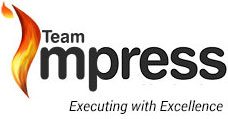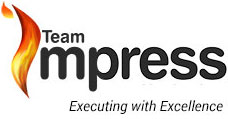Marketing management today is more challenging than ever. It used to be about putting out a catchy message over a handful of channels. Now, most of the strategies you need to have in place are intimately tied to monitored, measurable customer experience.
In other words, your marketing and sales operations have fused into one.
That means you have to stop thinking of marketing as just messaging. In the digital age, marketing is sales. And sales is about people offering value and bringing in revenue.
So … how well is your marketing team selling?
To achieve Optimal Performance, you first need to identify your marketing team’s missed opportunities.
Most of the top challenges you face as a marketing director (or someone ultimately responsible for marketing performance) go back to basics. According to HubSpot in 2019, surveyed companies reported their top marketing challenges to be:
- Generating traffic and leads – 63%
- Proving their activities led to a return on investment – 40%
- Securing enough budget (or successfully arguing for a campaign to the CFO) – 28%
This tells us the classic challenges are still alive and well. But it’s not because you don’t know how to set data-driven priorities, monitor results and sell your ideas to other stakeholders that you struggle.
Most likely, it’s because there is some disconnect between your ideas and the execution. We find it often comes down to communication. Your team members neither clearly understand how to execute, nor do they understand how you are assessing their work.
I recommend assessing your team on the following eight metrics. Then, once it’s clear to your direct reports and you how their performance measures up against expectations, you’ll know where to make improvements.
(You might need to reorganize your team based on their Optimal Performance DNA™. More on that below.)
1. Conversion Funnels
How well are they converting?
These days, the “funnel” metaphor doesn’t quite capture the complexity of the digital realm. The way people search and go through the buying process is better described as a customer value journey, so our task is really Customer Value Optimization.
But for now, we all know what we’re talking about: we’re still basically starting with a broad audience at the top and ending up with the right buyers at the bottom.
Overall, on a scale of 1 to 10, are your upper-funnel strategies (social, content, PPC) hitting your impression-to-engagement goals? Are your middle- and lower-funnel strategies (ad retargeting, email, landing pages) hitting your lead-to-sales goals?
2. Content Marketing
Does your content perform?
More specifically, are your content producers delivering value beyond creative quality? That’s certainly important. But are they infusing their creative product with intelligent placement, enticing CTAs (calls to action), on-page SEO (search engine optimization) techniques, etc.?
Are they tracking whether the content is generating engagement and leads? If not, that’s a problem. The main goal of great content is to increase engagement and generate leads. Your assessment must measure revenue-generating results.
3. Paid Traffic
Are you acquiring enough customers to make it profitable?
Introducing a paid traffic assessment metric forces your members in charge of pay-per-click (PPC) to monitor more than engagement (CTR, click-thru-rate) and cost (CPC, cost per click). A third vital metric – or sub-metric, you might say – is EPC, earnings per click.
If they’re going to go to all the trouble to do split testing to get the most out of paid traffic, they should pull the thread all the way through to actual revenue generated. Also take into account whether they are implementing strategies to eliminate or minimize the cost per lead.
4. Email Marketing
How’s your campaign ROI?
Your team needs to understand exactly how you’ll be figuring their 1-10 score on the email marketing metric. Just like PPC, make it clear that while open rate and other factors are important, a strong campaign ultimately delivers a return on the investment.
Being clear about how the assessment works is key. You might choose as many as nine sub-metrics to measure. If most are strong (CTR, forwards, etc.) but ROI ($ in total sales – $ in time & resources) is not, there might be a problem outside of that team member’s control.
5. Social Media
How well are you managing community engagement?
Again, as complex as this metric can be, we advise boiling it down to a simple 1-10 score your team members in charge of your social presence can easily understand.
Make it clear what you will be assessing: post engagements, response time to comments and queries, complaint resolution, etc. Set up the expectations for a perfect 10 score and it will be far more likely your team will get there.
6. Search Marketing
Are you fully optimized?
Let your team members know exactly what you expect them to accomplish with search marketing, without micro-managing how they do it. Don’t assess them on whether they researched the target market and keywords using the same tools you would. Focus on results.
Does testing reveal steadily increasing web traffic and successfully captured leads? That’s what matters. If they need coaching to help them get there, offer it. But your assessment should be about results rather than methods.
7. Analytics
How well are you utilizing available data?
This can vary quite a bit depending on your business and how technical you need this team member to get.
Your expectations may be for this person to execute the basic functions of a marketing data analyst: collecting datasets, interpreting them, and explaining their relevance to justify or advise against an initiative.
Or, your expectations might be focused on the functions of a marketing data scientist: studying customer behavior, advising you on how to improve technical analysis (adding more sub-metrics to your email assessment, for example), and producing reliable predictive insights.
8. Testing
Are you fully optimizing your conversion rate?
This responsibility generally falls to every member of the marketing team. In this metric, you are assessing them not only on the outcomes they’re reporting but on whether they are reporting reliably and with sufficient frequency.
In other words, you’re like the teacher telling their students to “show your work!” You are assessing them on their ability to assess themselves, to demonstrate they have optimized conversion rates as best they can.
Optimal marketing starts with an Optimal Performance Team.
Marketing management strategies need to incorporate both smart techniques for reaching audiences (you’ve got that covered!) and best practices for managing teams (which, if you’re the creative type, is probably much harder).
I want to help you with the hard part. Once you see where your people are struggling to meet your expectations, the next step is to make the necessary changes. At Team Impress, we start by identifying each team member’s Optimal Performance DNA™.
This provides you with vital information about where and how everyone performs best. You may discover your email marketing person could make you far more money as your data analyst. Or that your gregarious content writer would be a rockstar on your sales team!
For now, please accept this free gift. It’s a handy tool you can use to conduct this simple, straightforward Marketing Team Assessment.
Best of luck on your journey toward Optimal Performance!


